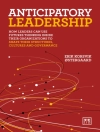The excitement of learning economics for the first time.
The experience of a lifetime of teaching it.
The
Eighth Edition of
Exploring Macroeconomics captures the excitement of learning macroeconomics for the first time through a lively and encouraging narrative that connects macroeconomics to the world in a way that is familiar to students. Author Robert L. Sexton draws on over 25 years of teaching experience to capture students’ attention, focusing on core concepts and expertly weaving in examples from current events and popular culture to make even classic economic principles modern and relatable. The text sticks to the basics and applies a thoughtful learning design, segmenting its presentation into brief, visually appealing, self-contained sections that are easier for students to digest and retain compared to sprawling text.
Thoughtfully placed section quizzes, interactive summaries, and problem sets help students check their comprehension at regular intervals and develop the critical thinking skills that will allow them to 'think like economists.’ Combined with a complete teaching and learning package,
Exploring Macroeconomics is sure to help you ignite your students’ passion for the field and reveal its practical application in the world around them.
Spis treści
Part I: Introduction
Chapter 1: The Role and Method of Economics
1.1 Economics: A Brief Introduction
1.2 Economic Behavior
1.3 Economic Theories and Models
1.4 Pitfalls to Avoid in Scientific Thinking
1.5 Positive Statements and Normative Statements
Chapter 2: Economics: Eight Powerful Ideas
2.1 Idea 1: People Face Scarcity and Costly Trade-Offs
2.2 Idea 2: People Engage in Rational Decision Making and Marginal Thinking
2.3 Idea 3: People Respond Predictably to Changes in Incentives
2.4 Idea 4: Sepcialization and Trade Can Make People Better Off
2.5 Idea 5: Markets Can Improve Economic Efficiency
2.6 Idea 6: Appropriate Government Policies Can Improve Market Outcomes
2.7 Idea 7: Government Policies May Help Stablilize the Economy
2.8 Idea 8: Increasing Producitivty Leads to Economic Growth
Chapter 3: Scarcity, Trade-Offs, and Production Possibilities
3.1 The Three Economic Questions Every Society Faces
3.2 The Circular Flow Model
3.3 The Production Possibilities Curve
3.4 Economic Growth and the Production Possibilities Curve
Part II: Supply and Demand
Chapter 4: Demand, Supply, and Market Equilibrium
4.1 Markets
4.2 Demand
4.3 Shifts in the Demand Curve
4.4 Supply
4.5 Shifts in the Supply Curve
4.6 Market Equilibrium Price and Quantity
Chapter 5: Markets in Motion and Price Controls
5.1 Changes in Market Equilibrium
5.2 Price Controls
Chapter 6: Elasticities
6.1 Price Elasticity of Demand
6.2 Total Revenue and the Price Elasticity of Demand
6.3 Other Types of Demand Elasticities
6.4 Price Elasticity of Supply
Part III: Market Efficiency, Market Failure, and the Public System
Chapter 7: Market Efficiency and Welfare
7.1 Consumer Surplus and Producer Surplus
7.2 The Welfare Effects of Taxes, Subsidies, and Price Controls
Chapter 8: Market Failure
8.1 Externalities
8.2 Public Policy and the Environment
8.3 Property Rights and the Environment
8.4 Public Goods
8.5 Asymmetric Information
Chapter 9: Public Finance and Public Choice
9.1 Public Finance: Government Spending and Taxation
9.2 Public Choice
Part IV: Macroeconomic Foundations
Chapter 10: Introduction to Macroeconomics: Unemployment, Inflation, and Economic Fluctuations
10.1 Macroeconomic Goals
10.2 Employment and Unemployment
10.3 Types of Unemployment
10.4 Reasons for Unemployment
10.5 Inflation
10.6 Economic Fluctuations
Chapter 11: Measuring Economic Performance
11.1 National Income Accounting: A Standardized Way to Measure Economic Performance
11.2 Measuring Total Production
11.3 Other Measures of Total Production and Total Income
11.4 Problems in Calculating an Accurate GDP
11.5 Problems with GDP as a Measure of Economic Welfare
Chapter 12: Economic Growth in the Global Economy
12.1 Economic Growth
12.2 Determinants of Economic Growth
12.3 Public Policy and Economic Growth
12.4 Population and Economic Growth
Chapter 13: Financial Markets, Saving, and Investment
13.1 Financial Institutions and Intermediaries
13.2 Saving, Investment, and the Financial System
13.3 The Financial Crisis of 2008
Part V: The Macroeconomic Models
Chapter 14: Aggregate Demand and Aggregate Supply
14.1 The Determinants of Aggregate Demand
14.2 The Aggregate Demand Curve
14.3 Shifts in the Aggregate Demand Curve
14.4 The Aggregate Supply Curve
14.5 Shifts in the Aggregate Supply Curve
14.6 Macroeconomic Equilibrium: The Short Run and the Long Run
Chapter 15: The Aggregate Expenditure Model
15.1 The Simple Aggregate Expenditure Model
15.2 Finding Equilibrium in the Aggregate Expenditure Model
15.3 Adding Investment, Government Purchases, and Net Exports
15.4 Shifts in Aggregate Expenditure and the Multiplier
15.5 From Aggregate Expenditures to Aggregate Demand
Part VI: Macroeconomic Policy
Chapter 16: Fiscal Policy
16.1 Fiscal Policy
16.2 Fiscal Policy and the AD/AS Model
16.3 The Multiplier Effect
16.4 Supply-Side Effects of Tax Cuts
16.5 Possible Obstacles to Effective Fiscal Policy
16.6 Automatic Stabilizers
16.7 The National Debt
Chapter 17: Money, Banking, and the Federal Reserve System
17.1 What is Money?
17.2 Measuring Money
17.3 How Banks Create Money
17.4 The Money Multiplier
17.5 The Federal Reserve System
17.6 How Does the Federal Reserve Change the Money Supply?
17.7 Bank Failures
Chapter 18: Monetary Policy
18.1 Money, Interest Rates, and Aggregate Demand
18.2 Expansionary and Contractionary Policy
18.3 Money and Inflation-The Long Run
18.4 Problems in Implementing Monetary and Fiscal Policy
Chapter 19: Issues in Macroeconomic Theory and Policy
19.1 The Phillips Curve
19.2 The Phillips Curve over Time
19.3 Rational Expectations
19.4 Controversies in Macroeconomic Policy
Part VII: The Global Economy
Chapter 20: International Trade
20.1 The Growth in World Trade
20.2 Comparative Advantage and Gains From Trade
20.3 Supply and Demand in International Trade
20.4 Tariffs, Import Quotas, and Subsidies
Chapter 21: International Finance
21.1 The Balance of Payments
21.2 Exchange Rates
21.3 Equilibrium Changes in the Foreign Exchange Market
21.4 Flexible Exchange Rates
O autorze
Robert L. Sexton is Distinguished Professor of Economics at Pepperdine University. Professor Sexton has also been a Visiting Professor at the University of California at Los Angeles in the Anderson Graduate School of Management and the Department of Economics. Professor Sexton’s research ranges across many fields of economics: economics education, labor economics, environmental economics, law and economics, and economic history. He has written over twenty textbooks and has published numerous scholarly articles, many in top economic journals such as The American Economic Review, Southern Economic Journal, Economics Letters, Journal of Urban Economics, and The Journal of Economic Education. He has also written more than 100 other articles that have appeared in books, magazines, and newspapers.Professor Sexton received the Pepperdine Professor of the Year Award in 1991, a Harriet and Charles Luckman Teaching Fellow in 1994, Tyler Professor of the Year in 1997, the Howard A. White Award for Teaching Excellence in 2011, and a Career Achievement Award from California Lutheran University in 1994.












